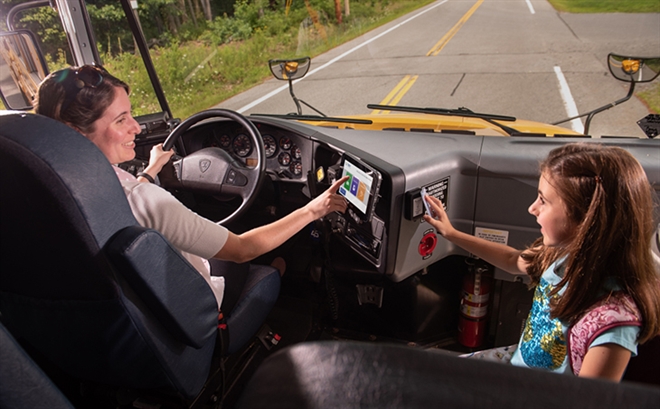Five Ways Tablets Can Help Contractors
July 25, 2019 by Ryan Smithson

While tablets are taking the K-12 transportation industry by storm in general, it’s important to think about how they can especially benefit contractors. When servicing multiple school districts, having the right software and hardware can be an integral part of your operation. While revolutionary, tablets might just seem like another tool in your arsenal. However, there are important features tablets need to bring to your work if they are going to specifically meet the needs of contractors.
- Reducing distracted driving – We all know that paper sheets on a clipboard are less than ideal for driver route sheets, and it’s not just about saving trees. Keeping your driver’s attention on the road is paramount. The right tablets for you should provide directions, but also limit distractions in other ways too. They should be solely used for transportation and locked out of the internet. In other words, it shouldn’t be the driver’s cell phone. It should be a tried-and-true tablet provided by a vendor who understands your state and local laws, and that you have to answer to stakeholders about the tools and processes your drivers use.
- Driver retention – The world of bus contractors is a competitive one, and tablets can give you an edge as a hiring and retention tool. They can make drivers comfortable in unfamiliar neighborhoods and are often something new recruits are asking for. The newest generation in the workforce is not afraid of technology. In fact, they expect it. When drivers are comfortable, they provide a higher level of service, which directly affects your bottom line.
- Driver timekeeping – Driver time is a substantial variable in what you do every day and directly affects how efficient you can be. School bus tablets should come built-in with extra functionality like messaging, electronic inspections, and, perhaps most important, timekeeping, allowing you to manage clock-in and out times and locations. Settings should be able to “unlock” the tablet at a given time and/or make you aware any time a driver clocks in outside their scheduled hours, for those cases when they need to.
- The map behind it – Tablets are located on the bus, yes, but the map comes from software … somewhere. Having a tablet that uses the same map as the one where you’ve planned your routes is key. Otherwise, when a driver gets off path, how would a commercial or third-party map know that the upcoming intersection is unsafe to turn left for large buses? How would it account for a low bridge or other travel restrictions?
- It’s not just the map – It’s the planned routes. It’s the vehicle assignments. It’s daily substitutions. It’s segmenting districts and sharing resources like garages. All that data comes from having the right software first. If Johnny needs a right-side pickup, a commercial or third-party tablet may not have that knowledge or consider it while re-routing an off-path driver. The best tablets in the K-12 market are directly integrated with the routing software, so your existing runs — including real-time updates — are readily available to the drivers who need them and hidden from those who don’t. The best tablets on the market think the way you do while navigating.
In a few months, the NAPT conference includes NextPloratory Sessions about adapting to new technology that anyone interested in tablets should try to attend. You can register for NAPT here.